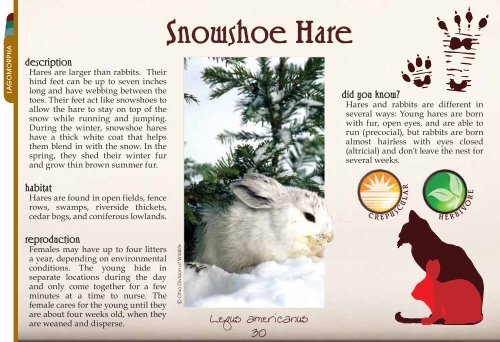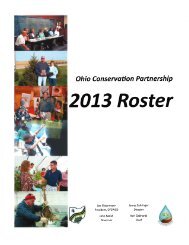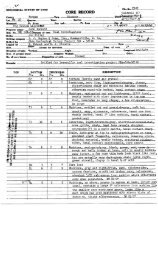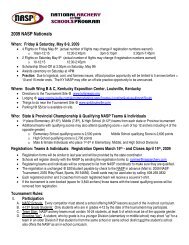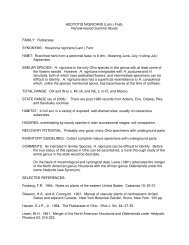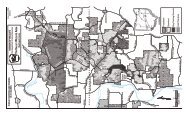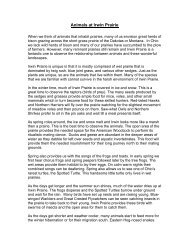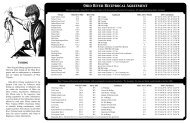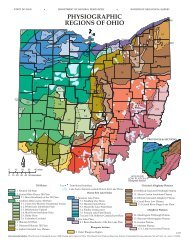MAMMALS OF OHIO f i e l d g u i d e
MAMMALS OF OHIO f i e l d g u i d e
MAMMALS OF OHIO f i e l d g u i d e
You also want an ePaper? Increase the reach of your titles
YUMPU automatically turns print PDFs into web optimized ePapers that Google loves.
LAGOMORPHA<br />
description<br />
Hares are larger than rabbits. Their<br />
hind feet can be up to seven inches<br />
long and have webbing between the<br />
toes. Their feet act like snowshoes to<br />
allow the hare to stay on top of the<br />
snow while running and jumping.<br />
During the winter, snowshoe hares<br />
have a thick white coat that helps<br />
them blend in with the snow. In the<br />
spring, they shed their winter fur<br />
and grow thin brown summer fur.<br />
habitat<br />
Hares are found in open fields, fence<br />
rows, swamps, riverside thickets,<br />
cedar bogs, and coniferous lowlands.<br />
reproduction<br />
Females may have up to four litters<br />
a year, depending on environmental<br />
conditions. The young hide in<br />
separate locations during the day<br />
and only come together for a few<br />
minutes at a time to nurse. The<br />
female cares for the young until they<br />
are about four weeks old, when they<br />
are weaned and disperse.<br />
Snowshoe Hare<br />
© Ohio Division of Wildlife<br />
Lepus americanus<br />
30<br />
did you know?<br />
Hares and rabbits are different in<br />
several ways: Young hares are born<br />
with fur, open eyes, and are able to<br />
run (precocial), but rabbits are born<br />
almost hairless with eyes closed<br />
(altricial) and don’t leave the nest for<br />
several weeks.


